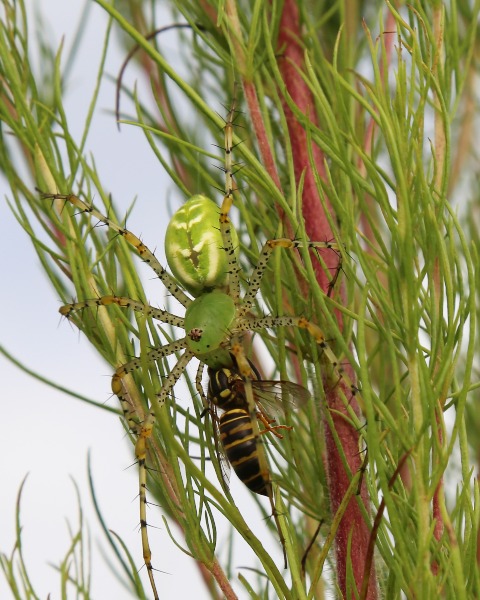Student 10-Minute Paper
Plant-Insect Ecosystems
Student Competition
Student
Who eats the yellow-margined leaf beetle? Field observations and genetic surveillance to identify local predators of a novel invasive pest

Jon Golan (he/him/his)
Undergraduate Researcher
University of Georgia
Athens, Georgia- CH
Christiana Huss
University of Georgia
Athens, Georgia - PR
Pedro Rodrigues
University of Georgia
Athens, Georgia 
Tara Gariepy
Research Scientist
Agriculture and Agri-Food Canada
London, Ontario, Canada
Jason M. Schmidt
Associate Professor
University of Georgia
Tifton, Georgia
Carmen K. Blubaugh
Assistant Professor
University of Georgia
Athens, Georgia
Presenting Author(s)
Co-Author(s)
The yellowmargined leaf beetle, Microtheca ochroloma Stahl (Coleoptera: Chrysomelidae), invaded the Southeastern United States and rapidly emerged as a leading pest of crucifer crops, yet little is known about which native predators might effectively provide biological control. The objective of this research is to identify potential predators of this understudied invader through field observation and genetic surveillance. Over two years, arthropods were surveyed on a variety of susceptible Brassica species cultivars and a shortlist of commonly associated predators was developed. In a survey of turnip plants in year 1, lady beetles were positively predicted by densities of M. ochroloma, suggesting a numerical response to densities of the invasive pest. Surveys at a different site in year 2 revealed that big-eyed bugs were also positively predicted by M. ochroloma, while pink-spotted lady beetles negatively associated, suggesting a pattern of suppression.Ants (primarily the red imported fire ant) and spiders were commonly observed predators on plants in both years, but neither associated with densities of M. ochroloma. No predators were observed consuming M. ochroloma eggs. Molecular gut-content analysis using specially generated M. ochroloma primers confirmed the observed predatory links and suggested a density-dependent tracking response from pink-spotted lady beetles. Our results may enable farmers to bolster these predator populations with fine-tuned habitat management tools and better suppress the spreading pest.

.png)

